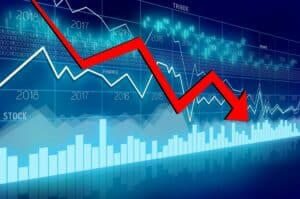The U.S. dollar was steady on Tuesday while investors were waiting for Federal Reserve Chair Jerome Powell’s comments about the agency’s further guidance. The Fed surprised the markets when it suddenly announced that it’s considering tempering the ultra-easy policy after reiterating many times that it wasn’t a plan.
The dollar has skyrocketed since the Fed last week hinted at sooner-than-expected interest rate hikes. However, it declined on Monday, losing some of its gains.
The currency tumbled down by 0.4% overnight against the Euro, but it steadies around $1.1909 on Tuesday. Against the Japanese yen, the U.S. dollar climbed up to 110.40 yen. Despite that, the dollar index remained flat at 91.935 today after plummeting down by 0.5% on Monday.
Meanwhile, the British Pound steadied at $1.3910, holding on to its overnight gains. Traders are waiting for the U.K. economy to reopen further on July 19.
How Did the Aussie and Kiwi Fare?
The Australian and New Zealand dollars lowered again after jumping from multi-month lows on Monday. The Australian dollar plummeted down by 0.3% to $0.7520, while the kiwi slid down by 0.15% to $0.6978.
Westpac currency analyst Imre Speizer stated that the market had a meaningful shift from the Fed’s longtime dovish stance to a current slightly hawkish one. He added that the whole world was mega short of the greenback, but now the markets take a little breath before the next move up.
In the medium term, traders will stay focused on the U.S. labor market. The latter’s performance will likely influence the Fed’s attitude. In the near future, investors are waiting for Powell’s speech before Congress.
The Fed Chairman remarked about sustained labor market improvement, along with the recent rise in inflation. On Monday, hawkish Fed officials, Dallas Fed President Robert Kaplan and St. Louis Fed President James Bullard, also remarked on the risks of acting too slowly.
Meanwhile, New York Fed President John Williams noted that it was too soon to shift policy. He expects inflation to ease from approximately 3% this year to close to 2% in 2022 and 2023.
RBC Capital Markets chief economist Tom Porcelli stated that the Fed is almost always late on such things. He thinks core inflation could be higher – reaching 3% – by the end of 2022. It will eventually apply pressure to the agency to move on rates.
According to Porcelli, with a 2% forecast as cover, Powell will try to decrease the likelihood of a rate surge next year. However, he will have to relent on dismissing talk about hiking rates just as he eventually relented on taper talk.











